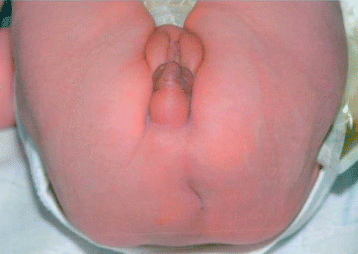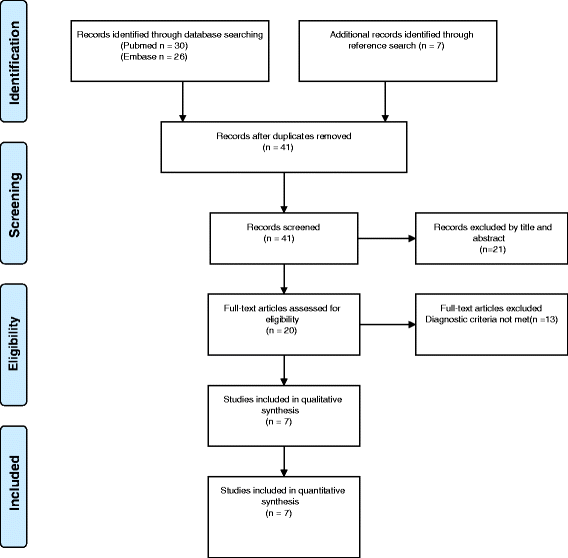Vertebral defect, anal atresia, cardiac defect, tracheoesophageal fistula/esophageal atresia, renal defect, and limb defect association with Mayer-Rokitansky-Küster-Hauser syndrome in co-occurrence: two case reports and a review of the literature
- PMID: 28003020
- PMCID: PMC5178070
- DOI: 10.1186/s13256-016-1127-9
Vertebral defect, anal atresia, cardiac defect, tracheoesophageal fistula/esophageal atresia, renal defect, and limb defect association with Mayer-Rokitansky-Küster-Hauser syndrome in co-occurrence: two case reports and a review of the literature
Abstract
Background: The vertebral defect, anal atresia, cardiac defect, tracheoesophageal fistula/esophageal atresia, renal defect, and limb defect association and Mayer-Rokitansky-Küster-Hauser syndrome are rare conditions. We aimed to present two cases with the vertebral defect, anal atresia, cardiac defect, tracheoesophageal fistula/esophageal atresia, renal defect, and limb defect association and Mayer-Rokitansky-Küster-Hauser co-occurrence from our local surgical center and through a systematic literature search detect published cases. Furthermore, we aimed to collect existing knowledge in the embryopathogenesis and genetics in order to discuss a possible link between the vertebral defect, anal atresia, cardiac defect, tracheoesophageal fistula/esophageal atresia, renal defect, and limb defect association and Mayer-Rokitansky-Küster-Hauser syndrome.
Case presentation: Our first case was a white girl delivered by caesarean section at 37 weeks of gestation; our second case was a white girl born at a gestational age of 40 weeks. A co-occurrence of vertebral defect, anal atresia, cardiac defect, tracheoesophageal fistula/esophageal atresia, renal defect, and limb defect association and Mayer-Rokitansky-Küster-Hauser syndrome was diagnosed in both cases. We performed a systematic literature search in PubMed ((VACTERL) OR (VATER)) AND ((MRKH) OR (Mayer-Rokitansky-Küster-Hauser) OR (mullerian agenesis) OR (mullerian aplasia) OR (MURCS)) without limitations. A similar search was performed in Embase and the Cochrane library. We added two cases from our local center. All cases (n = 9) presented with anal atresia and renal defect. Vertebral defects were present in eight patients. Rectovestibular fistula was confirmed in seven patients. Along with the uterovaginal agenesis, fallopian tube aplasia appeared in five of nine cases and in two cases ovarian involvement also existed.
Conclusions: The co-occurrence of the vertebral defect, anal atresia, cardiac defect, tracheoesophageal fistula/esophageal atresia, renal defect, and limb defect association and Mayer-Rokitansky-Küster-Hauser syndrome is extremely rare. This group of patients has unusual phenotypic characteristics. The long-term outcome after treatment of defects is not well reported. A single unifying cause is not known and the etiology probably includes both genetic and non-genetic causes. We stress the importance of future studies to optimized treatment, follow-up, and etiology.
Keywords: Congenital abnormalities; Mullerian aplasia; Rare diseases; Syndrome association; VACTERL association.
Figures
Similar articles
-
Congenital anal atresia with rectovestibular fistula, scoliosis, unilateral renal agenesis, and finger defect (VACTERL association) in a patient with partial bicornuate uterus and distal vaginal atresia: A case report.Medicine (Baltimore). 2018 Nov;97(45):e12822. doi: 10.1097/MD.0000000000012822. Medicine (Baltimore). 2018. PMID: 30407282 Free PMC article.
-
Prevalence of urinary, prolapse, and bowel symptoms in Mayer-Rokitansky-Küster-Hauser syndrome.Am J Obstet Gynecol. 2021 Jul;225(1):70.e1-70.e12. doi: 10.1016/j.ajog.2021.02.020. Epub 2021 Feb 20. Am J Obstet Gynecol. 2021. PMID: 33621544
-
VACTERL associations in children undergoing surgery for esophageal atresia and anorectal malformations: Implications for pediatric surgeons.J Pediatr Surg. 2015 Aug;50(8):1245-50. doi: 10.1016/j.jpedsurg.2015.02.049. Epub 2015 Mar 10. J Pediatr Surg. 2015. PMID: 25913268
-
Mayer-Rokitansky-Kuster-Hauser syndrome and anal canal stenosis: case report and review of literature.J Pediatr Surg. 2010 Dec;45(12):e29-31. doi: 10.1016/j.jpedsurg.2010.07.058. J Pediatr Surg. 2010. PMID: 21129528 Review.
-
Familial occurrence of Mayer-Rokitansky-Küster-Hauser syndrome: a case report and review of the literature.Am J Med Genet A. 2014 Sep;164A(9):2276-86. doi: 10.1002/ajmg.a.36652. Epub 2014 Jun 26. Am J Med Genet A. 2014. PMID: 24975471 Review.
Cited by
-
Congenital anal atresia with rectovestibular fistula, scoliosis, unilateral renal agenesis, and finger defect (VACTERL association) in a patient with partial bicornuate uterus and distal vaginal atresia: A case report.Medicine (Baltimore). 2018 Nov;97(45):e12822. doi: 10.1097/MD.0000000000012822. Medicine (Baltimore). 2018. PMID: 30407282 Free PMC article.
-
A Cohort of 469 Mayer-Rokitansky-Küster-Hauser Syndrome Patients-Associated Malformations, Syndromes, and Heterogeneity of the Phenotype.J Clin Med. 2024 Jan 21;13(2):607. doi: 10.3390/jcm13020607. J Clin Med. 2024. PMID: 38276113 Free PMC article.
-
VACTERL association - Ultrasound findings and autopsy correlation.Indian J Radiol Imaging. 2018 Oct-Dec;28(4):452-455. doi: 10.4103/ijri.IJRI_115_18. Indian J Radiol Imaging. 2018. PMID: 30662209 Free PMC article.
-
Update on Foregut Molecular Embryology and Role of Regenerative Medicine Therapies.Front Pediatr. 2017 Apr 28;5:91. doi: 10.3389/fped.2017.00091. eCollection 2017. Front Pediatr. 2017. PMID: 28503544 Free PMC article. Review.
-
Mayer-Rokitansky-Kuster-Hauser Syndrome: A rare case report from Nepal.Ann Med Surg (Lond). 2022 Sep 16;82:104725. doi: 10.1016/j.amsu.2022.104725. eCollection 2022 Oct. Ann Med Surg (Lond). 2022. PMID: 36268332 Free PMC article.
References
-
- Khoury MJ, Cordero JF, Greenberg F, James LM, Erickson JD. A population study of the VACTERL association: evidence for its etiologic heterogeneity. Pediatrics. 1983;71(5):815–20. - PubMed
Publication types
MeSH terms
Supplementary concepts
LinkOut - more resources
Full Text Sources
Other Literature Sources
Medical
Molecular Biology Databases




